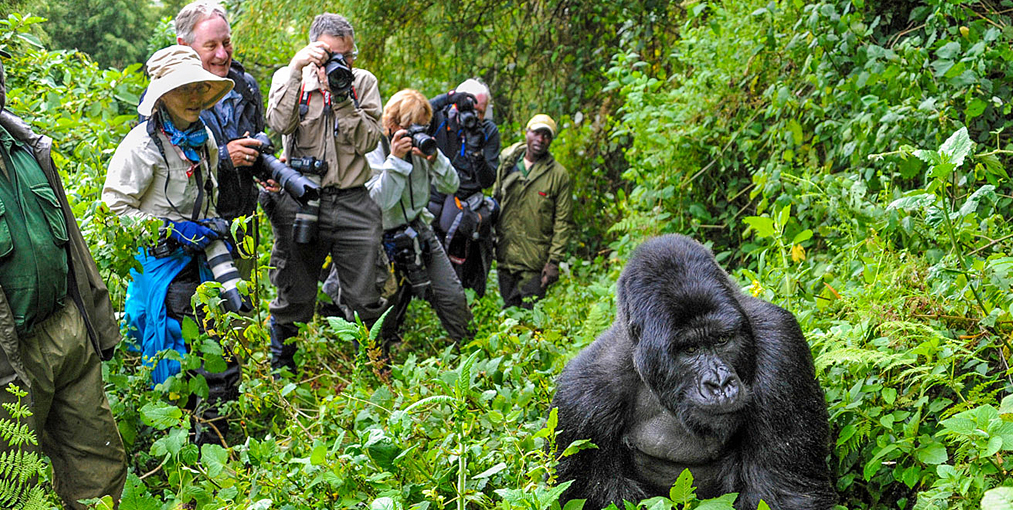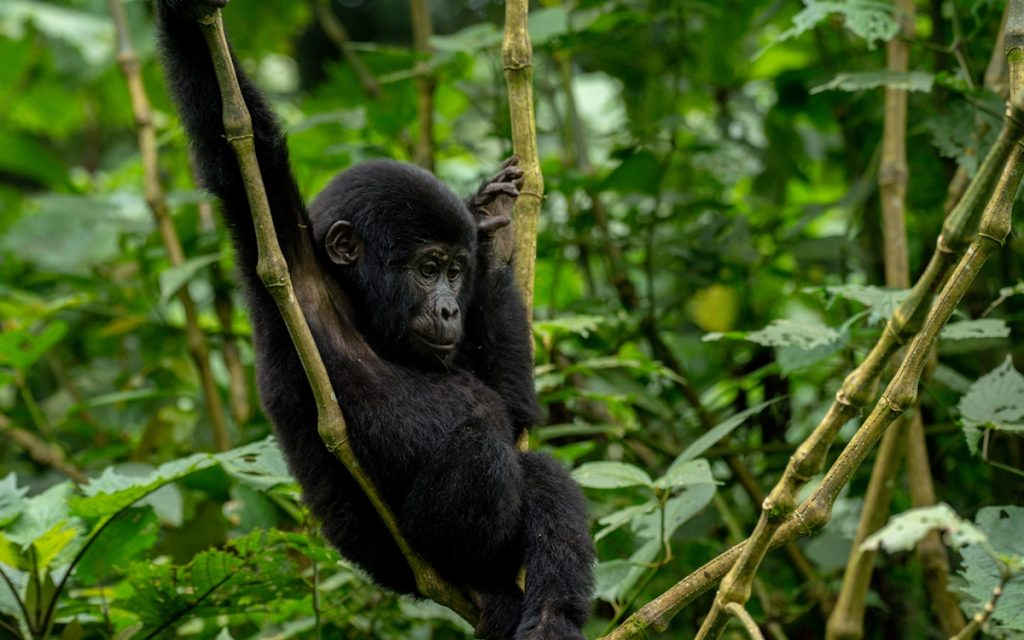Smartest Animals on Earth
Intelligence in the animal kingdom can mean a lot of things. It could be a chimp planning tomorrow’s fruit heist, an octopus unscrewing a jar to reach its dinner, or a pigeon knowing the difference between a Renoir and a Matisse.
Animals surprise us with their brainpower in ways we never expect. In this list, we’ll meet the top 20 smartest animals (excluding humans) ranked from the brightest to the least brilliant and explore what makes them stand out.
1. Chimpanzee
Chimpanzees live in social groups called troops where they form alliances, trade grooming for favors, and know exactly when the figs will ripen. These agile primates, weighing 40 to 60 kg, can move like gymnasts—knuckle-walking on the ground one minute, swinging between vines the next. Their intelligence closely resembles that of humans, making them our closest cousins in the wild.

Intelligence Fact: Can outperform some college students in rapid memory tests.
Where to See: Kibale Forest, Gombe Stream, Nyungwe.
Fun Fact: Each troop invents its own handshake—a cultural fingerprint.
2. Bottlenose Dolphin
Picture a 2.5-meter marine acrobat streaking through the surf. Bottlenose dolphins are sleek, social creatures known for their signature whistles (their version of names). They’re clever enough to teach their young to wear sea sponges as protective gloves while foraging.
Intelligence Fact: Recognizes itself in a mirror even after 20 years.
Where to See: Sarasota Bay, Port Phillip, Moray Firth.
Fun Fact: Work in groups to trap fish against sandbanks.
3. African Elephant
These six-ton giants are memory masters, recalling watering holes from decades past. Their trunks can uproot grass or soothe a calf with a seismic rumble too low for human ears. They roam swamps and savannas, following migratory routes older than most maps.

Intelligence Fact: Cooperates in tasks requiring simultaneous effort to get food.
Where to See: Amboseli, Chobe, Queen Elizabeth National Park.
Fun Fact: Elephants have been observed gathering around the bones of their kin.
4. Orca (Killer Whale)
An orca isn’t just a giant dolphin; it’s a strategic hunter. Some pods beach themselves to grab seals, while others specialize in hunting salmon. Their complex social structures and unique hunting methods are passed down through generations.
Intelligence Fact: Imitates human speech and even seal calls.
Where to See: San Juan Islands, Patagonian coast, Norwegian fjords.
Fun Fact: Some Antarctic pods synchronize their surfacing to remain stealthy.
5. Orangutan
High up in Borneo’s dense canopies, orangutans use tools like leaf umbrellas and honey sticks. Males, weighing around 90 kg, are expert planners—mapping fruit seasons years ahead. Their strategic thinking mirrors that of seasoned explorers.

Intelligence Fact: Trades tokens for treats, remembering the best deals for days.
Where to See: Tanjung Puting, Gunung Leuser, Danum Valley.
Fun Fact: Builds a fresh nest every night, complete with a pillow and roof.
6. African Grey Parrot
Wrapped in silver feathers, these 400-gram talkative birds can label colors, count items, and even understand the concept of zero. They mimic human voices so accurately that they often fool people into thinking someone is at the door.

Intelligence Fact: Comprehends zero—an ability rare even among primates.
Where to See: Nyungwe, Kakum, parrot sanctuaries.
Fun Fact: Mimics individual voices so perfectly that it causes confusion at home.
Suggested Safari Itineraries
3 Days Rwanda Gorilla Safari to Volcanoes National Park
$ 2500
per person7. New Caledonian Crow
These clever black birds shape twigs into hooks and cut leaves into tools. They remember where they’ve hidden food for months, which is impressive for an animal that only weighs 300 grams.
Intelligence Fact: Solves complex puzzles that can stump a five-year-old.
Where to See: Parc Provincial de la Rivière Bleue.
Fun Fact: Bends wire into hooks without human demonstration.
8. Common Octopus
With three hearts and copper-based blood, octopuses can change color in a second to camouflage and match the color of the environment or merely to express mood. They’re masters of escape, known for unscrewing jar lids and remembering maze routes even for weeks.

Intelligence Fact: Navigates mazes efficiently, remembering routes even for weeks.
Where to See: Mediterranean wrecks, Caribbean reefs.
Fun Fact: Can squeeze through gaps the size of a coin.
9. Domestic Pig
Pigs are more than just barnyard animals; they’re social creatures too. They can learn video games, remember routes, and even mirror their friends’ emotions. A pig’s curiosity is as relentless as its appetite.

Intelligence Fact: Learns joystick video games and retains skills.
Where to See: Ethical sanctuaries, free-range farms.
Fun Fact: Can grunt in different dialects.
10. Norway Rat
Rats are quick thinkers—able to calculate risk and empathize with trapped companions. These little problem-solvers even tickle each other and produce ultrasonic “giggles.”
Intelligence Fact: Exhibits cost–benefit analysis when solving problems.
Where to See: Subways, barns, research labs.
Fun Fact: Laughs when tickled, though it’s inaudible to human ears.
11. Dog
From tiny Chihuahuas to massive Great Danes, dogs are expert communicators, reading human eyes, following pointing fingers, and grouping toys by category. Whether they’re herding sheep or sniffing out disaster survivors, dogs are acutely aware of their surroundings.

Intelligence Fact: Border collie “Chaser” identified over 1,000 objects by name.
Where to See: Rescue shelters, agility arenas, or curling up at your feet.
Fun Fact: A dog’s sense of smell is so sharp it can detect a teaspoon of sugar diluted in two Olympic-sized pools.
12. Domestic Cat
Felines are more than just aloof hunters. They understand object permanence, use vocal manipulation to get what they want, and master complex navigation through three-dimensional spaces. They can even train their owners with well-timed “baby cry” meows.

Intelligence Fact: Knows cause and effect—drops objects to watch them fall.
Where to See: Shelters, barns, or sunlit windowsills.
Fun Fact: A slow blink from a cat is its version of a smile.
13. Raccoon
These nocturnal bandits are known for their dexterous five-fingered paws, capable of picking locks and untying knots. They’re clever problem-solvers, remembering solutions for years and always looking for the next challenge.
Intelligence Fact: Solves combination locks after just one demonstration.
Where to See: Urban parks, riverbanks, Great Smoky Mountains.
Fun Fact: Raccoons dunk food not to clean it but to enhance their tactile sense.
14. Rock Pigeon
These feathered urban navigators can fly home from hundreds of kilometers away using magnetic fields, solar angles, and even scent trails. Despite their reputation as city pests, they’re highly trainable and have been used in art studies to distinguish between paintings.
Intelligence Fact: Identifies a Monet from a Picasso and remembers the difference.
Where to See: City squares, coastal cliffs, and pigeon racing lofts.
Fun Fact: Reaches flight speeds of 120 km/h during races.
Recommended Safaris
4 Days Rwanda Gorilla Tour and Golden Monkey Trekking
$ 2500
per person5 Day Rwanda Gorilla Trekking with Musanze Caves Exploration
$ 3299
per person15. Eastern Grey Squirrel
Squirrels are master strategists, storing nuts in hundreds of hiding spots and faking burials to throw off potential thieves. Agile and acrobatic, they can leap three meters between branches and learn to navigate bird-feeder mazes.
Intelligence Fact: Solves multi-step puzzles faster after watching another squirrel.
Where to See: Hardwood forests, college campuses, backyard gardens.
Fun Fact: Flicks its tail in a Morse-code-like warning to other squirrels.
16. Sea Otter
Floating belly-up in kelp beds, sea otters use rocks as tools to crack open mussels and clams. Their dense fur—the thickest in the animal kingdom—keeps them warm in icy waters. Pups are even wrapped in kelp to prevent them from drifting away while mom dives for food.
Intelligence Fact: First non-primate seen teaching tool use by slowing down actions for pups.
Where to See: Monterey Bay, Vancouver Island, Kuril Islands.
Fun Fact: Keeps a favorite rock tucked in a fold of skin under its arm.
17. Horse
Horses are social strategists with a memory for faces and places. They can navigate obstacle courses, unlock stall doors, and even communicate needs using symbol boards. Their ability to read human emotions is remarkable, showing signs of empathy and bonding.
Intelligence Fact: Points at symbols to indicate needs, like removing a blanket or asking for feed.
Where to See: Riding schools, Mongolian steppes, wild horse sanctuaries.
Fun Fact: Forms bonds so strong that separation can spike heart rates and stress levels.
18. Cow
Despite their calm demeanor, cows are surprisingly sharp. They can solve simple mazes, hold grudges, and learn new tasks faster after positive interactions. Their social intelligence includes forming cliques and recognizing other herd members even after months apart.
Intelligence Fact: Mood affects learning—happier cows learn faster.
Where to See: Open-range ranches, dairy farms, animal sanctuaries.
Fun Fact: Produces more milk when listening to slow-tempo music.
19. Sheep
Sheep are natural navigators, memorizing faces and routes for up to two years. They’re emotionally perceptive too, sensing distress in fellow flock members and responding with heightened alertness.
Intelligence Fact: Remembers 25 flock faces for up to two years.
Where to See: Welsh uplands, New Zealand pastures, Mediterranean ranges.
Fun Fact: Can distinguish between smiling and frowning human faces on screens.
20. Chicken
Chickens are far smarter than most people realize. They can count to five, recognize thirty flock-mate voices, and even issue specific alarm calls for different predators. Hens also “talk” to their unhatched chicks through the shell, syncing peeping patterns for a coordinated hatch.
Intelligence Fact: Understands object permanence within a day of hatching.
Where to See: Backyard coops, free-range farms, pasture-raised sanctuaries.
Fun Fact: Mother hens “talk” to embryos days before they hatch, coordinating peeps.
Conclusion
From the dense rainforests to bustling cityscapes, intelligence pops up in the most unexpected places. Whether it’s a chimp’s sharp memory or an octopus solving puzzles, these animals prove that being brainy isn’t just a human trait.
Next time you encounter one of these remarkable thinkers, take a moment to wonder: Are we studying them, or are they studying us?
Anthony

Ready for your ultimate wildlife experience?
Chat with us, our team is always here to help!
You may also like …

Got any questions
about traveling to Uganda?
Get in touch.








